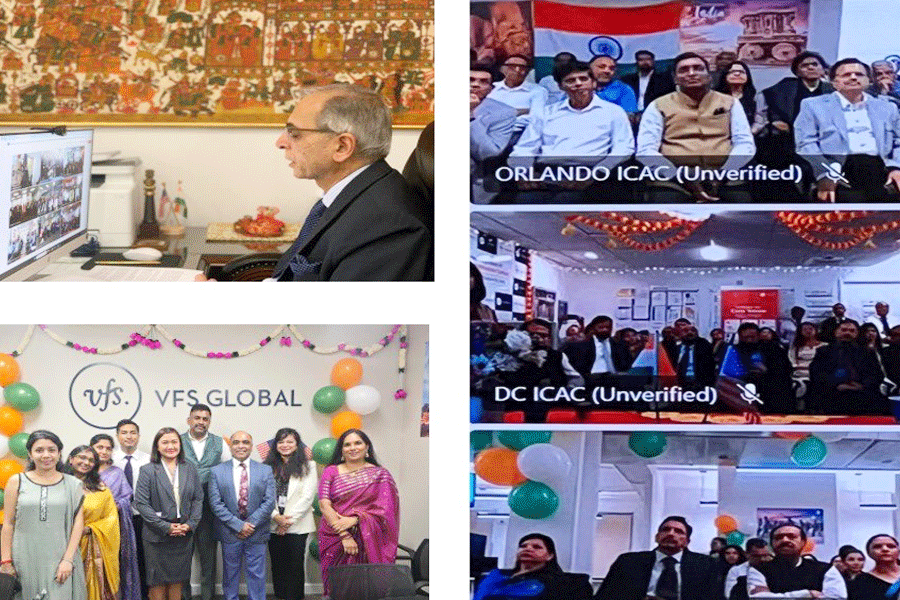|
|
| Pocket full of power |
An American research organization has come to the conclusion that tall men get a better deal in life than their shorter cousins. Commenting on its findings, Natalie Angier of the New York Times writes: “Tall men give nearly all the orders, win most elections, monopolize girls and monopolies and disproportionately splay their elongated limbs across the cushy unconfines of first class cabins. By the simple act of striding into a room, taller than average men are accorded a host of positive attributes having little or nothing to do with height: a high IQ, talent, competence, trustworthiness, even kindness.”
Another researcher has discovered that nearly 80 per cent of American senior executives are over six feet tall as were most heads of US government, starting with Abraham Lincoln, George Washington, the Roosevelts and Kennedy. In every presidential election, it was the taller candidate who won. Although Jimmy Carter beat Ford in 1976, he lost later to Ronald Reagan, who was three inches taller.
It is not the same in Europe. In World War II, we had General De Gaulle of France who was nearly six feet six inches tall, but we also had Churchill and Attlee who were shorter than average, as was Adolf Hitler.
When it comes to women, height becomes a handicap. Men prefer their women to be petite. In matrimonial ads, while men usually mention their height, women prefer to give their bust and waist measurements. However, when it comes to senior jobs, taller and more masculine women make the grade leaving their petite sisters to do secretarial job or to domestic drudgery. Small women make poor bosses.
Height having become a masculine obsession, shorter men become paranoid about their small size. They find it more difficult to date girls and drown their inferiority complex in hard drinking. The two professions they excel are as jockeys or comedians.
It is not surprising that pharmaceutical firms producing human growth hormones are flourishing. The treatment is long and expensive. Regular shots of growth hormones in the bottom of a child likely to remain a midget guarantees at least three and a half inches added to its stature.
How much of this applies to the Indian scene? All our prime ministers were men of average Indian height of around five feet six inches. Among the shortest was Lal Bahadur Shastri. Standing alongside President Ayub Khan of Pakistan, he looked like a puny David confronting a Goliath. Yet, it was under Shastri’s leadership that our army came to within stone’s throw of Lahore. Among chief ministers, B.C. Roy (Bengal), Biju Patnaik (Orissa) and Siddhartha Shankar Ray (chief minister of Bengal and later governor of Punjab) were tall men. Ray towered above all the Akali leaders he had to deal with. Among women leaders, the prime example was the petite Indira Gandhi. She struck terror in the hearts of her male colleagues. Jayalalithaa Jayaram is in the same mould. Though she has put on weight, she rules Tamil Nadu with an iron hand. Mayavati is a terror in her own right. Of the women leaders of today, it is the soft-spoken Sheila Dixit who is both gentle and firm. She has done a wonderful job as chief minister of Delhi. None of our men or women had their bottoms punctured with hormone shots. They were content to remain medium-sized and get on with their work.
Rocking the hills
One summer afternoon, I was strolling a less frequented path round the Kasauli club. It was warm, the air heavy with fragrance of flowers which grew in wild profusion on the hillsides. I heard sounds of music and singing, the strumming of a banjo with three voices, two male and one female. They stopped as they saw me come round the corner. We exchanged smiles and introduced ourselves. All three were from Calcutta. Amyt Datta, tall and light-eyed, was Bengali, Gyan-Nain Singh a sardar who ran Broadway Hotel, and his svelte Tamilian wife, Jayashree. She was evidently boss of the group they called Skinny Alley. They composed their own songs and put them to music. Apparently they came to Kasauli every summer to rehearse new numbers which they performed in Calcutta’s nightclubs. They were eager to produce an album so that people in different parts of the world could hear them. At long last, Virgin Records has brought out their first album, Escape the Roar. “It is serious rock music in English,” asserts Jayashree. The first to react are the Aussies. Skinny Alley have been invited to perform in Australian cities.
Knowing next to nothing about rock music, I can only react to the verses composed by Jayashree for the group. I think they are good poetry. I give one sample:
Fence:
There’s an old man, sitting on a fence/ You know he thinks of all the things he did/ And all the things he didn’t do, way back when/ Thinks of lost chances, lost opportunities/ Now he feels like he’s chained to this fence/ To his memories./ Maybe, someday, someone will come/ And he’ll know just what it means/ To be free, to be free (Repeat)
But for now…he’s sitting on a fence
There’s a big sky, like a bowl above his head/ He can see so many stars like all the dreams he used to have/ In his lonely bed/ Now the dreams are gone, only stars remain/ And he wonders, yes he wonders/ If he’ll have those dreams again/ Maybe somebody, someone… etc./ Na na na…(what went wrong)/ Maybe someday, someone will come…etc.
Quotes Americana
Amir Tuteja of Washington introduced me to an American, Steven Wright, author of many witty one-liners. I produce a few samples:
I’d kill for a Nobel Peace Prize.
Borrow money from pessimists — they don’t expect it back.
Ninety-nine per cent of lawyers give the rest a bad name.
A conscience is what hurts when all your other parts feel so good.
A clear conscience is usually the sign of a bad memory.
If you want the rainbow, you gotta put up with the rain.
Depression is merely anger without enthusiasm.
I intend to live forever — so far, so good.
My mechanic told me, “I couldn’t repair your brakes, so I made your horn louder.”
If at first you don’t succeed, destroy all evidence that you tried.
A conclusion is the place where you get tired of thinking.
To steal ideas from one person is plagiarism; to steal from many is research.











